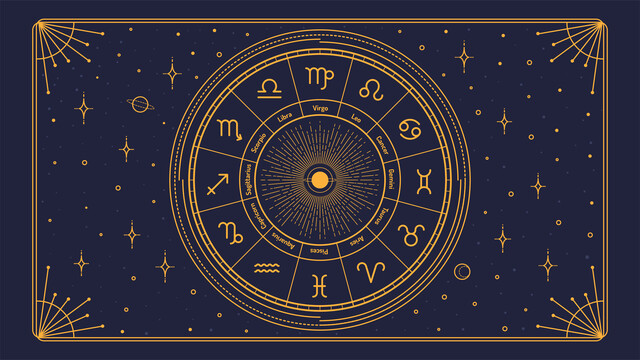Online Class: History of the Universe

no certificate
with CEU Certificate*
-
13Lessons
-
20Exams &
Assignments -
448Students
have taken this course -
7Hours
average time -
0.7CEUs
Course Description
Journey Beyond the Stars: Understanding the Universe and its Mysteries
For countless generations, the cosmos has held humanity in its thrall, the glittering expanse of the night sky serving as a canvas for our questions, dreams, and speculations. Pioneers of ancient civilizations gazed upwards with wonder, seeking patterns in the stars and crafting myths to explain the celestial phenomena they witnessed. They contemplated a question that has intrigued every subsequent generation: How did it all begin?
Centuries of persistent curiosity led us to imagine a Universe without bounds, one that was timeless and endless. However, modern scientific advancements and breakthroughs over the last century have radically reshaped this perception. Today, while we possess a more detailed roadmap of cosmic evolution, this knowledge only adds layers to the enigma, encouraging us to delve even deeper.
Course Overview:
This enlightening course will journey through the vastness of space, retracing the steps of our Universe's inception, and branching out to the mesmerizing wonders it harbors. We shall dive into our solar system's intricate dance and further venture into the vast interstellar medium, aiming to grasp its profound mysteries.
Furthermore, our expedition will not just focus on celestial bodies but also celebrate the monumental discoveries and trailblazing minds that have expanded the horizons of our understanding.
Detailed Syllabus:
-
In the Beginning...The Big Bang: Delve into the explosive event that marked the inception of our Universe, understanding its nuances and implications.
-
Our Sun and Other Stars: Explore the fiery furnace of our solar system, the Sun, and journey across the galaxy, learning about stars' life cycles.
-
The Moon: Understand our closest celestial neighbor's role in shaping Earth's history and its significance in space exploration.
-
The Inner Planets: Study the rocky worlds close to our Sun - Mercury, Venus, Earth, and Mars, each with its unique attributes.
-
The Outer Planets: Journey to the gas giants and ice giants-Jupiter, Saturn, Uranus, and Neptune-and comprehend their dynamic atmospheres and intriguing moons.
-
The Asteroid Belt, the Kuiper Belt, and Pluto: Navigate the crowded regions of our solar system, observing the remnants of its formation.
-
The Constellations, Nebulae, and Meteors: Discover the stories written in the stars, and learn about the vast cosmic clouds and periodic visitors that light up our skies.
-
Global Warming: Understand this critical Earth-centric issue, its implications on our planet, and its relation to the cosmic environment.
-
Black Holes, Gamma-Ray Bursts, Neutrinos, and Other Phenomena in the Universe: Peer into the enigmatic regions of the cosmos, unveiling the mysteries of these powerful cosmic entities.
-
Comets: Trace the icy wanderers of our solar system, understanding their significance in deciphering the Universe's history.
-
The History of Knowledge About the Universe: Pay homage to the milestones and masterminds that paved the path for our current understanding.
-
Space Exploration, the International Space Station, and the Hubble Space Telescope: Celebrate human endeavors in space, our eyes above the atmosphere, and the groundbreaking discoveries they've facilitated.
-
Exoplanets and Extraterrestrial Life: Explore worlds beyond our solar system and contemplate the possibility of life elsewhere in the Universe.
Who Should Enroll?:
-
Astrophiles: Whether you're a professional astronomer or someone who simply loves stargazing, this course offers a wealth of knowledge.
-
Students: Enhance your understanding of the Universe, a perfect supplement to your academic pursuits.
-
Curious Minds: If the vast expanse of space has ever intrigued you, this journey will satisfy your thirst for knowledge.
In sum, the Universe is an ever-evolving tapestry of mysteries, a canvas of questions waiting to be answered. By enrolling in this course, you are taking a significant step towards grasping its complexities, reveling in its wonders, and understanding our place in this grand cosmic scheme. Dive deep into the celestial ocean, and let's explore the Universe together!
- Completely Online
- Self-Paced
- 6 Months to Complete
- 24/7 Availability
- Start Anytime
- PC & Mac Compatible
- Android & iOS Friendly
- Accredited CEUs

Course Lessons
Lesson 1. The Big Bang: Our Universe's Beginning
In exploring the Universe's expansive journey from a 'primeval atom' onwards, the Big Bang Theory offers a scientific narrative explaining the observable phenomena of galaxies moving apart, yet remains silent on the precise moment of creation. With discoveries like the Cosmic Microwave Background Radiation, cosmologists continue to seek insights into the Universe's earliest stages and its profound mysteries.Lesson 2. Understanding Our Universe: The Sun as a Typical Star
Stars form in vast stellar nurseries from gas and dust, where gravity coalesces matter until heat and nuclear fusion ignite to birth a star, beginning its life cycle. These stars, like our Sun, spend most of their lives in stable energy-producing phases, but will eventually exhaust their nuclear fuel, transitioning into red giants, then possibly white dwarfs, neutron stars, or black holes.Lesson 3. Lunar Lores and Scientific Insights
Due to its elliptical orbit, the Moon's distance from Earth varies, causing noticeable changes in apparent size, although the horizon illusion is merely optical. Tidal locking ensures we always see one side, known as the 'dark side,' a phenomenon resulting from Earth's gravitational pull.Lesson 4. Life Among the Inner Planets
Venus, our sister planet, is enveloped in thick clouds of sulfuric acid, creating a sweltering greenhouse effect and unique volcanic surface. Its retrograde rotation and historical water presence intrigue scientists as they study its potential parallels with Earth.Lesson 5. The Majestic Outer Planets
Uranus, distinct thanks to its extreme axial tilt, offers a serene blue visage against the blackness of space, surrounded by faint rings and over two dozen moons. Discovered in the 18th century, Uranus intrigues scientists with its unique sideways rotation and frigid temperatures.Lesson 6. Between Mars and Jupiter: The Enigmatic Asteroid Belt
Asteroids between Mars and Jupiter, too diverse and low-mass to be remnants of a single planetary body, are kept scattered by Jupiter's influence. Meanwhile, the distant Kuiper Belt's cold, distant environment hosts Pluto, sparking debate over its classification, owing to its orbit-sharing status.Lesson 7. Mapping the Night Sky: Constellations, Nebulae, and Meteors Explored
Nebulae, stunning cosmic clouds composed of gas and dust, come in two main types: diffuse and planetary, the former capable of forming numerous stars. Emission nebulae, energized by nearby stars, and planetary nebulae, formed from collapsing stars, showcase the beauty and dynamic nature of these formations.Lesson 8. Global Warming's Impact on Ecosystems and Humanity
The Earth's temperature has risen significantly since the late 1800s, leading to widespread environmental repercussions and necessitating international treaties to curb the emission of harmful greenhouse gases. While scientific consensus points to human activities as major contributors, a minority suggest natural processes may also play a role in recent climatic changes.Lesson 9. Neutrinos: The Unseen Particles Passing Through Us
Black holes display an insatiable gravitational appetite, sucking in surrounding stars and material beyond the event horizon, a phenomenon rooted in Einstein's equations. Gamma-ray bursts outshine entire galaxies momentarily, while neutrinos, born from nuclear reactions, silently traverse the cosmos, eluding direct detection.Lesson 10. Comets: Ice, Dust, and Destiny
Comets, often feared for their potential catastrophic impact, might surprisingly have sown the seeds of life on Earth by delivering essential gases. Their mysterious orbits and the majesty they display across the night sky have captivated human imagination for centuries.Lesson 11. Unlocking the Secrets of Space: The Minds That Shaped Our Cosmic View
Copernicus challenged millennia-old beliefs by proposing a heliocentric universe, a revolutionary idea that met resistance from the Roman Catholic Church. Galileo built on this work with groundbreaking celestial discoveries, yet faced severe persecution for his steadfast support of the heliocentric model.Lesson 12. Exploring Beyond the Earth's Atmosphere: Space Missions and Milestones
The dawn of space exploration began with Sputnik's launch, leading to an era where rocket launches and satellite deployments became commonplace aspects of modern life. This endeavor has expanded our knowledge of the universe, with space probes and telescopes like Hubble exploring every corner of our solar system and beyond.Lesson 13. Exploring the Universe: The Quest for Alien Life and Distant Worlds
Our age-old quest to find life beyond Earth gains credibility with scientific endeavors like SETI, which uses radio waves to detect signs of intelligence. The discovery of exoplanets, potentially life-sustaining, like Gliese 581 d, challenges old assumptions and redefines our cosmic neighborhood.
Learning Outcomes
- Define the Big Bang Theory by explaining its origins and the role of Cosmic Microwave Background Radiation as evidence for the universe's beginnings.
- Identify the contributions of key figures like Georges Lemaître and Edwin Hubble in the development of the Big Bang Theory and its acceptance in modern cosmology.
- Compare the life cycle stages of the Sun with those of more massive stars and describe key differences in their evolutionary paths.
- Recognize the process of nuclear fusion in the Sun and identify how it influences its energy output.
- Explain the concept of tidal locking and its significance in maintaining the Moon's consistent appearance from Earth.
- Identify and describe the ecological impact of the Moon's gravitational pull on Earth's coastal ecosystems.
- Define the characteristics that differentiate terrestrial planets from gas giants within our solar system, emphasizing their composition and atmospheric properties
- Demonstrate an understanding of the inner planets by summarizing their unique geological and atmospheric features based on NASA missions and current scientific research
- Describe the historical discovery and exploration efforts related to the outer planets, highlighting major spacecraft missions and their significant findings to enhance understanding of planetary phenomena.#
- Identify the key characteristics distinguishing each outer planet, including their atmospheric composition, rings, and notable moons, through comparative analysis with supporting data.
- Describe the roles of Jupiter's gravitational influence and the Kuiper Belt's distance in preventing the formation of planets in their respective regions.
- Define the main characteristics and differences between the asteroid belt and the Kuiper Belt based on their location, composition, and formation theories.
- Define key characteristics of constellations, nebulae, and meteors, and explain their historical and navigational significance.
- Demonstrate mastery of lesson content at levels of 70% or higher.
Additional Course Information

- Document Your Lifelong Learning Achievements
- Earn an Official Certificate Documenting Course Hours and CEUs
- Verify Your Certificate with a Unique Serial Number Online
- View and Share Your Certificate Online or Download/Print as PDF
- Display Your Certificate on Your Resume and Promote Your Achievements Using Social Media

Choose Your Subscription Plan
No Certificate / No CEUs
This course only
| Includes certificate | X |
| Includes CEUs | X |
| Self-paced |

|
| Instructor support |

|
| Time to complete | 6 months |
| No. of courses | 1 course |
Certificate & CEUs
This course only
| Includes certificate |

|
| Includes CEUs |

|
| Self-paced |

|
| Instructor support |

|
| Time to complete | 6 months |
| No. of courses | 1 course |
Certificates & CEUs
Includes all 600+ courses
| Includes certificate |

|
| Includes CEUs |

|
| Self-paced |

|
| Instructor support |

|
| Time to complete | 12 Months |
| No. of courses | 600+ |
Certificates & CEUs
Includes all 600+ courses
| Includes certificate |

|
| Includes CEUs |

|
| Self-paced |

|
| Instructor support |

|
| Time to complete | 24 Months |
| No. of courses | 600+ |
Student Testimonials
- "She was very encouraging." -- Herbert K.
- "I really enjoyed this course. I have gone to a planetarium space show and saw Hubble in IMAX as a result." -- Gloria B.
- "Very helpful and it encourages one to expand their knowledge of astronomy" -- Isaura A.
- "The instructor was very knowledgeable and was always there to help with any questions. Each lesson were clear and easy to follow." -- Bill S.
- "The audio/visual reading of the content was most helpful." -- William S.
- "It was the overall learning experience of taking an online class that helped me the most. The instructor was very prompt in answering my questions and clarifying data." -- Shawn K.
- "The optional videos helped emphasize the main points. The internet links were also very helpful." -- Michael H.
- "I found all the lessons useful, but I really enjoyed the lessons on The Big Bang, The Sun, The planets, and comets. I have been very happy with my tutor. She has really encouraged me, and always answered any queries I had very promptly! She is an excellent instructor! " -- Gael M.
- "The instructor was very timely, courteous and professional in responding to submitted assignments, exams and e-mails. She definitely knew the subject matter and did an excellent job in organizing and presenting the material." -- Lewis W.








